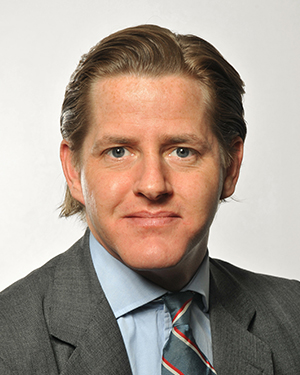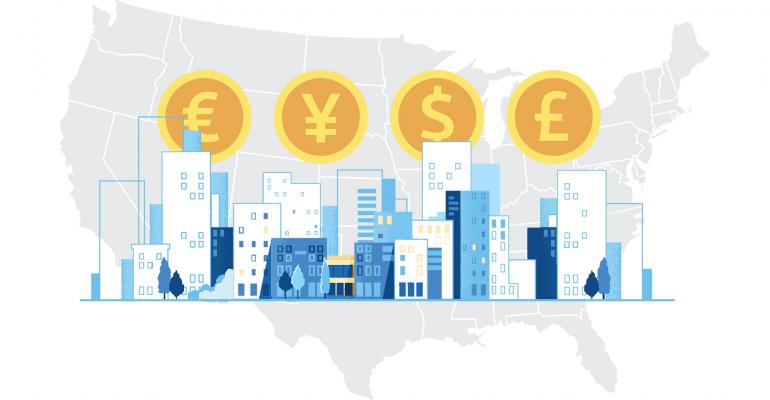International investors have a new favorite type of real estate. They now spend just as much money on apartment buildings in the U.S. as they spend on their old favorite property type, U.S. office space.
The change has been a long time coming. Foreign investors once had little knowledge of U.S. rental housing. Now they want the consistent, resilient income from apartments mixed into their investment portfolios and several are spending billions to buy apartment properties.
Now apartments, along with industrial properties, have leapt to the top of investors' wishlists, especially with the long-term effects of hybrid working schedules on the office sector still to be determined.
WMRE sat down with Alex Foshay, vice chairman and head of Newmark Capital Markets' International Capital Markets Division, based in New York City, to talk about the growing interest from international investors in U.S. apartments.
This interview has been edited for style, length and clarity.
WMRE: What is the biggest change in how investors in foreign countries think about apartments in the U.S., especially compared to other kinds of real estate?
 Alex Foshay: We have gone from office always seeing the lion’s share of international investment into the U.S., to now being on par with multifamily.
Alex Foshay: We have gone from office always seeing the lion’s share of international investment into the U.S., to now being on par with multifamily.
In 2019 the share of overseas investment into real estate in the U.S. that was going into office properties was at 43 percent. That is now reduced to 31 percent. Then you have the corresponding increase in the same period of time into multifamily from 25 percent of the total to 31 percent.
So, a striking increase in the allocation of capital from overseas into this sector and it has largely been at the expense of allocations into office investments.
WMRE: Are these numbers surprising to you?
Alex Foshay: I’ve certainly seen it happening over a number of years. My job as the head of international capital markets at Newmark means I’ve been travelling frequently to the Middle East, Europe and Asia Pacific to meet with investors and offer them opportunities across all sectors. If I go back seven or eight years, I would have to explain conceptually what multifamily was. They really couldn’t grasp the concept of large blocks of apartments built solely for rental purposes that continued to be held in perpetuity by the landlord as a rental investment. Now they are fully aware of it and seeking to gain exposure to it.
We see strong demand for multifamily from groups like Allianz, a German multinational financial services company; Union Investment, the investment arm of Germany's DZ Bank Group and AKSA Capital Advisors, the French asset manager. They are extremely well-informed, institutional groups with some of the largest balance sheets in the world.
WMRE: Does is matter that the U.S. apartment business is so different from the way that other countries do rental housing?
Alex Foshay: No. They increasingly see it as how their own markets will develop over time. Certainly in the U.K. and Ireland we are seeing a very similar model of multifamily, or ‘private rental sector’ as they call it, develop and it has been for the last five or six years. Prior to that it had been more mom-and-pop ownership of multi offerings.
WMRE: Is there anything about the last year that made U.S. apartment buildings more attractive?
Alex Foshay: Currently multifamily is seen to be an extremely effective inflationary hedge, given that the leases mark to market on an annual basis. Going into what many predict will be a period of higher inflation, that is an extremely attractive investment characteristic.
Secondly, multifamily has demonstrated its resilience. There was a perception for the last 10 to 15 years by overseas investors that because apartment leases were only annual, you were at risk of suffering severe declines in occupancy in periods of economic duress.
Through the 2008 to 2011 Great Recession and through COVID again, against all the odds, the occupancy rate of apartment properties remained extremely strong.
WMRE: Will apartment investments continue to claim more attention from international investors?
Alex Foshay: We are at a time right now where you see a significant uptick. Multifamily is in vogue. For a time it may eclipse overseas investment into office. I would expect that to correct back down over the next year to 24 months as investors get more comfortable with the U.S. office space again.
A very significant handful of major overseas institutions… some of the biggest names in global commercial real estate… if they all decide that they need exposure to U.S. multifamily at a fairly collective moment, which was probably energized and driven by COVID, then the demand barometer just rises significantly by virtue of those handful of groups looking to get into the space at the same time.
As these institutions develop their understanding and their committed demand to invest in the space, they are not all going to suddenly go away… I think where we have seen only the start of investment into the space and what may likely develop into potentially the greatest share of investment into U.S. multifamily is Asia Pacific… I would predict the Asia Pacific over the next five years develop into a powerhouse of investment into multifamily.
But as we move out of the pandemic and office stabilizes as an investment class, we are going to see more investment… there will be a leveling off in terms of these percentage allocations. I don’t see multifamily correcting dramatically in the allocation of overseas capital. It will probably move somewhere in the high 20s to mid-30s percent allocations going forward.





